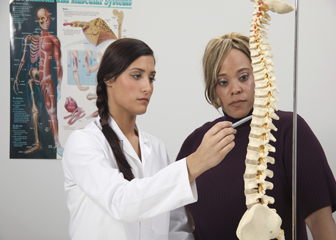Summary

| Quick Facts: Chiropractors | |
|---|---|
|
$67,200 per year
$32.31 per hour |
|
| Doctoral or professional degree | |
| None | |
| None | |
| 52,600 | |
| 28% (Faster than average) | |
| 14,900 | |
What Chiropractors Do
Chiropractors treat patients with health problems of the musculoskeletal system, which is made up of bones, muscles, ligaments, and tendons. They use spinal manipulation and other techniques to treat patients' ailments, such as back or neck pain.
Work Environment
Most chiropractors work in a solo or group chiropractic practice. A large number are self-employed.
How to Become a Chiropractor
Becoming a chiropractor typically requires 7 to 8 years of post–high school study: 3 to 4 years of undergraduate education, followed by a 4-year Doctor of Chiropractic (D.C.) degree program. Chiropractors also must be licensed by their state.
Pay
The median annual wage of chiropractors was $67,200 in May 2010.
Job Outlook
Employment of chiropractors is expected to increase by 28 percent from 2010 to 2020, faster than the average for all occupations. People across all age groups are increasingly becoming interested in chiropractic care because it consists of nonsurgical methods of treatment.
Similar Occupations
Compare the job duties, education, job growth, and pay of chiropractors with similar occupations.
O*NET
O*NET provides comprehensive information on key characteristics of workers and occupations.
Contacts for More Information
Learn more about chiropractors by contacting these additional resources.









